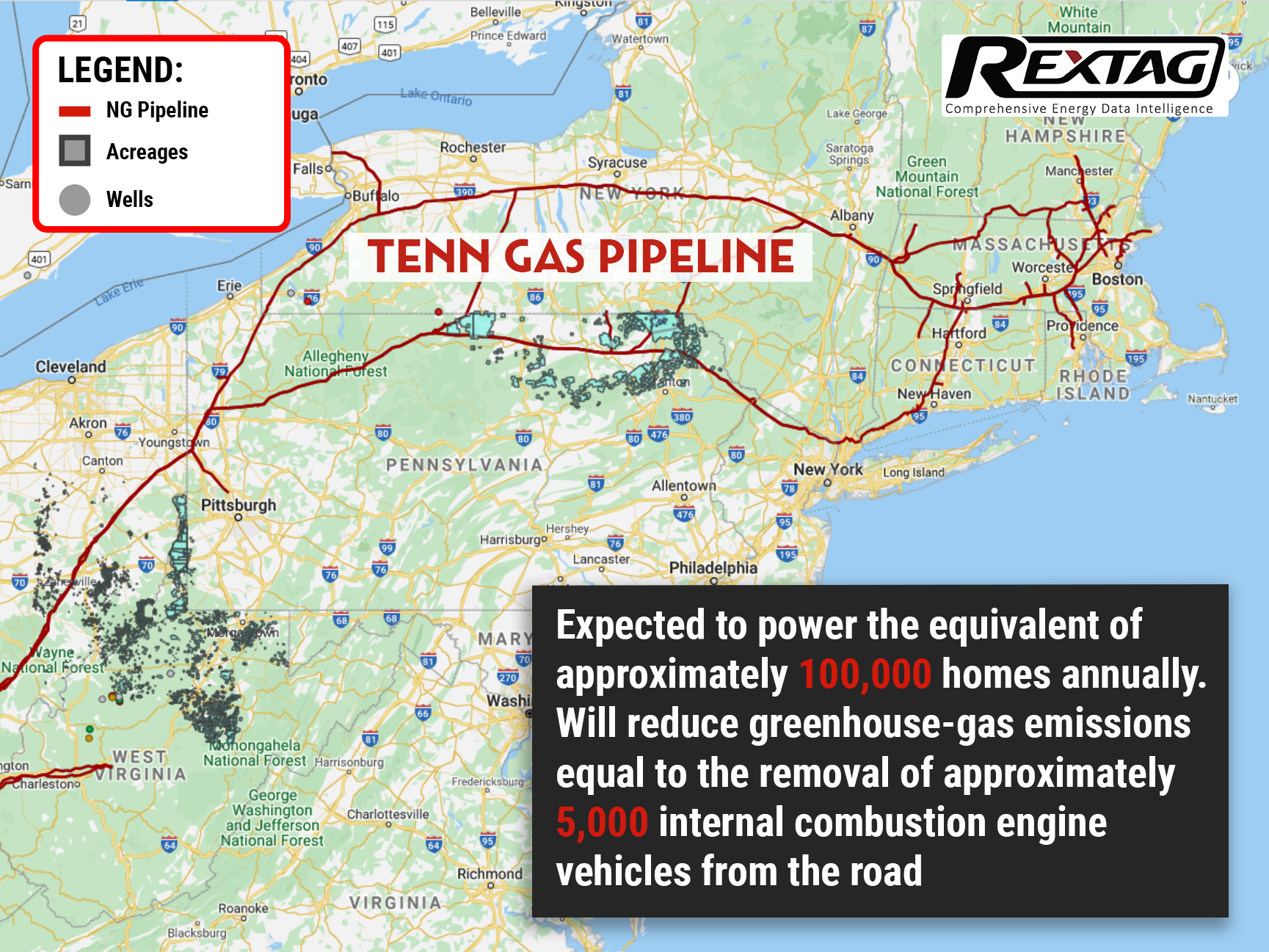Comprehensive Energy Data Intelligence
Information About Energy Companies, Their Assets, Market Deals, Industry Documents and More...
It’s all about the ESG (and RSG): Southwestern Energy and Kinder Morgan stroke a deal for gas transportation
10/20/2021
In order to further its commitment to reducing emissions across the natural gas value chain, Southwestern Energy Co. recently signed an agreement with Kinder Morgan Inc. for the transportation of responsibly sourced natural gas (RSG) to the Northeast markets. Tennessee Gas Pipeline, a subsidiary of Kinder Morgan, will be carrying out this notion since Nov.1.
The term "RSG" refers to natural gas that has been produced by a well and transported by companies whose operations have been independently verified for meeting certain environmental, social, and governance standards, including those relating to methane emissions.
Southwestern is currently one of the biggest producers of natural gas and natural gas liquids in the United States. The exploration, production, and development of natural gas, natural gas liquids, and crude oil from the nation's most prolific and unconventional gas fields found in the Appalachian and Haynesville shale basins are its primary business.
At the moment, the company is a leader of the pack when it comes to responsibly sourced gas. The fact that in 2017 Southwestern had already certified its first well as responsibly sourced through a partnership with Project Canary certainly contributes to its reputation a fair bit. Even more so, since then, Project Canary was expanded to include Southwesterns' entire Appalachian Basin natural gas production.
Morgan, on the other hand, is an energy infrastructure company, which provides pipelines and terminals for safe and clean transportation of natural gas, gasoline, crude oil, CO2, and other products, as well as for adequate storing of petroleum products and chemicals.
Yet, this partnership does not come as a surprise.
Southwestern's president and CEO, Bill Way, believes responsibly sourced gas is essential to providing a low-carbon energy future. And creating cleaner energy for customers throughout the United States and beyond is one of the company's goals as well as the purpose of this innovative agreement with Kinder Morgan.
In terms of annual electricity generation, the distribution of the RSG to the Northeast markets is expected to power the equivalent of about 100,000 homes while reducing greenhouse-gas emissions to the equivalent of removing 5,000 internal combustion cars off the roads.
Southwestern and Morgan are pleased with such an arrangement, not to mention that they will enjoy some good press coverage out of it as well.
According to Tom Martin, Morgans' president of natural gas pipelines, this is just one of several RSG initiatives currently underway and aligns splendidly with their commitment to minimize methane emissions associated with the production and transportation, storage, and distribution of natural gas.
The two companies are also founding members of the ONE Future Coalition, a group of 50 industry giants working together to reduce methane emissions across the Natural Gas value chain to 1% (or less) by 2025. But the coalition already registered a methane intensity number of 0.334% in 2019, beating its own target by 67% ahead of time. It proves that the natural gas industry can simultaneously provide much-needed long-term renewable energy and also minimize methane emissions.
If you are looking for more information about energy companies, their assets, and energy deals, please, contact our sales office mapping@hartenergy.com, Tel. 619-349-4970 or SCHEDULE A DEMO to learn how Rextag can help you leverage energy data for your business.
Streamlining ESG Management in Oil & Gas: Simplify Compliance with the Latest Standards
![$data['article']['post_image_alt']](https://images2.rextag.com/public/blog/R131_B_ESG_Management.png)
To effectively manage ESG issues in O&G companies, a comprehensive approach is required, addressing multiple managerial issues. First, ESG considerations must be integrated into the corporate strategy, setting goals that align with business objectives, reflected in budgeting, capital allocation, and risk management. Accurate and efficient collection, management, and reporting of ESG data is necessary for identifying relevant metrics and indicators, such as greenhouse gas emissions, water consumption, and social impact indicators.
ONEOK Buys Magellan for $18.8 Billion: Overview of the Huge M&A Deal in the Pipeline Industry
![$data['article']['post_image_alt']](https://images2.rextag.com/public/blog/154Blog_ONEOK to Acquire Magellan Midstream $18.8 Billion Assets in Tulsa, Oklahoma.png)
In May, ONEOK (OKE) made an announcement regarding its acquisition of Magellan Midstream Partners LP (MMP) for a total value of $18.8 billion, which includes cash and stocks. This move drew attention as it positions ONEOK, primarily known for its involvement in the provision, gathering, and processing of Natural Gas (NG), to become one of the largest pipeline companies in the United States. The acquisition also allows ONEOK to expand its services by including Oil (CL), another significant energy commodity.
![$data['article']['post_image_alt']](https://images2.rextag.com/public/blog/328_Blog_Why Are Oil Giants Backing Away from Green Energy Exxon Mobil, BP, Shell and more .jpg)
As world leaders gather at the COP29 climate summit, a surprising trend is emerging: some of the biggest oil companies are scaling back their renewable energy efforts. Why? The answer is simple—profits. Fossil fuels deliver higher returns than renewables, reshaping priorities across the energy industry.
![$data['article']['post_image_alt']](https://images2.rextag.com/public/blog/327_Blog_Oil Market Outlook A Year of Growth but Slower Than Before.jpg)
The global oil market is full of potential but also fraught with challenges. Demand and production are climbing to impressive levels, yet prices remain surprisingly low. What’s driving these mixed signals, and what role does the U.S. play?
![$data['article']['post_image_alt']](https://images2.rextag.com/public/blog/326_Blog_USA Estimated Annual Rail CO2 Emissions 2035.jpg)
Shell overturned a landmark court order demanding it cut emissions by nearly half. Is this a victory for Big Oil or just a delay in the climate accountability movement?